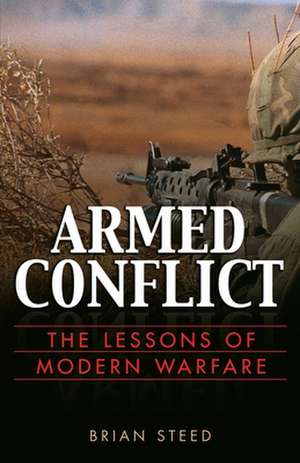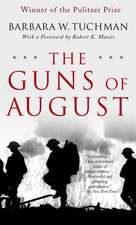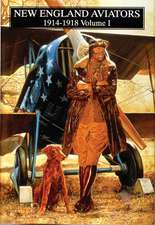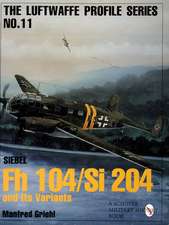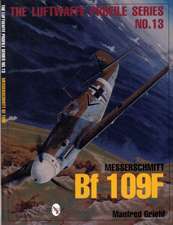Armed Conflict: The Lessons of Modern Warfare
Autor Brian Steeden Limba Engleză Paperback – 31 dec 2002
A military theorist and experienced armor officer, Brian Steed provides insights into the future of armed conflict by focusing on what has occurred in the past–not because the past repeats itself, but because it reveals timeless principles of warfare. Five battles, one each in Korea, Vietnam, the Falklands, the Persian Gulf, and Somalia are analyzed historically, geographically, and strategically. Steed’s analysis of these engagements clearly demonstrates that the key to victory on the battlefields of the future is the small unit. In refreshing layman’s prose, the author focuses on why the events occurred as they did, and explores the significance of each battle in terms of its political and military ramifications. He concludes with lessons learned that will greatly benefit future American ground combat commanders.
Armed Conflict informs the reader about the historical trends of combat operations and the realities of war–today and into the future. It will also serve to guide a new generation of military and civilian leaders as they prepare to face the inevitable conflicts in the new century.
Preț: 111.83 lei
Nou
Puncte Express: 168
Preț estimativ în valută:
21.40€ • 22.39$ • 17.78£
21.40€ • 22.39$ • 17.78£
Carte disponibilă
Livrare economică 13-27 martie
Preluare comenzi: 021 569.72.76
Specificații
ISBN-13: 9780891418030
ISBN-10: 0891418032
Pagini: 304
Dimensiuni: 154 x 203 x 20 mm
Greutate: 0.35 kg
Ediția:New.
Editura: Presidio Press
ISBN-10: 0891418032
Pagini: 304
Dimensiuni: 154 x 203 x 20 mm
Greutate: 0.35 kg
Ediția:New.
Editura: Presidio Press
Notă biografică
U.S. Army officer Brian Steed holds a master’s degree in international relations from Vermont College of Norwich University. Armed Conflict is his first book. Captain Steed’s previous assignments include duty with the OPFOR at the National Training Center. He is currently stationed at Fort Knox, Kentucky.
Extras
This chapter provides the framework that demonstrates the
alteration in the very nature of ground conflict. This is to say
that the context in which any ground conflict may be conducted
is significantly different from such conflicts fought in the
pre-World War II era--the era of industrial-age warfare.
First, to explain the evolution in warfare: During the period
1795-1945, the world witnessed a series of struggles
among the great powers. Most of these wars were fought with
alliances and coalitions and covered several regions of the
globe. This period culminated in two major world wars. The
last two wars clearly demonstrated the concept of total war,
in which a nation invests all of its resources to achieve its
war aims. In the early part of this period, during the
Napoleonic era, the world saw the growth of the army from
a relatively limited structure of wealthy nobles and their retainers
to one of large, conscripted land forces numbering in
the millions. The combination of total war and massive armies
required long, drawn-out struggles that sought to exhaust the
abilities and assets of the opposing nation. These three concepts--
total war between nation-states, massive armies, and
protracted conflict--have become, for the current time and
into the foreseeable future, less likely than anytime in the
post-World War II era.
In many respects this is not a new phenomenon. Immediately
following World War II, the combination of total war,
massive armies, and protracted conflict between two rela-
tive peer nations was just as unlikely as it is today; however,
the Cold War struggle clouded our ability to see the change in
strategic affairs with clarity.
The end of the Cold War further magnified the changes already
taking place. The use of military force extends from
support of domestic disaster relief to strategic nuclear war.
After the end of the Cold War, the preponderance of military
deployments shifted from a war or near-war focus to what
are often referred to as operations other than war (OOTW).
The reasons for the departure from the traditional view of
conflict are the focus of this chapter.
In the 1990s, two terms seemed to dominate articles written
about the future of the military or about national security
affairs. These terms are Revolution in Military Affairs
(RMA) and Military Technological Revolution (MTR). These
terms are nearly synonymous and focus on the technological
changes that the U.S. military infrastructure has promoted.
The focus on newer, bigger, faster, and apparently better
weapons has driven a technology-focused improvement rather
than an idea-, threat-, or people-driven one.
The most dominant term in the national security arena was
RMA. One could hardly read an article about the future of national
security or the military without running across this
term. It is defined as "a major change in the nature of warfare
brought about by the innovative application of technologies
which, combined with dramatic changes in military doctrine,
and operational concepts, fundamentally alters the
character and conduct of operations."
Are technological innovations changing the nature of warfare?
This question is at the heart of the views between this
book and many writers in the national security arena. The details
of the debate between definitions are beyond the scope
of this book, but clearly RMA is too narrow a definition for
the change in the overall context of military operations just
described.
The definition of MTR is even more technically based. It is
"a technical development that when properly exploited
through equipment, training, organization and doctrine provides
a decisive (although temporary) advantage."
This de -finition focuses even more on technology and its impact on
conflict and is even more narrow than that of RMA. Referencing
the five levels of strategy outlined in the Introduction,
RMA and MTR focus more on the tactical and technical levels
of strategy. RMA has been shown to improve capabilities at
the operational and theater strategy levels, but not to the degree
of changing the nature in which these strategies are conducted.
The Geostrategic Revolution is the phenomenon that most
national security and foreign policy writers discuss when
talking about the context of these rapid changes in policy and
the global framework. In some respects this term is actually
too large. It tends to focus on the diplomatic and economic elements
of national power.
The 11 September 2001 terrorist attacks combined with
the geostrategic changes of the last fifty years should lead
those who are concerned with national security and military
issues to see the world in a completely different context (economic,
diplomatic, and military) in which future conflict
will be conducted.
The world and military conflict must be considered in
light of the changes occurring in national security and with
an understanding that they are not limited simply to the technological
changes of placing computers in armored vehicles
or the use of satellites to assist in the improvement of situational
awareness; nor are they just about the changing global
framework. These are all useful developments and have the
potential to create evolutionary change in the future of conflict,
but clearly they are not the main reason that conflict
is now revolutionarily different.
A major part of the current national security environment
is the fundamental shift in geopolitical alignment. Alignment
has changed from multipolar (pre-World War II) to bipolar
(Cold War). Now the geopolitical alignment is becoming multipolar
again. As is the case in any multipolar organization,
no two elements of power are dominated by the same nations.
In the evolving world situation, there are different dominant
powers in each element. Here is a simple example of the various
dominant nations:
Form of Power Dominant Nations
economic power United States, Japan, China
and the European Union
diplomatic power United States, the European
pow-ers (Britain, France, and Ger
-many),
Form of Power Dominant Nations
the People's Republic of China,
and Russia
military power United States (defined as
global
power projection ability)
The United States remains a superpower in that it is the
only nation that is a leader in all areas of power and therefore
wields the most influence. The diversity of power "is a
unique phenomenon of [this] era [in] that economic and military
might tend to be in separate hands." This statement is especially true when considering the current Russian economic
position.
The economic revolution has taken the primary position
among the elements of power: "Economic strength will become
an increasingly important aspect of national power, and
in many cases the decisive aspect, in what promises to be a
more competitive global commercial and financial environment."
alteration in the very nature of ground conflict. This is to say
that the context in which any ground conflict may be conducted
is significantly different from such conflicts fought in the
pre-World War II era--the era of industrial-age warfare.
First, to explain the evolution in warfare: During the period
1795-1945, the world witnessed a series of struggles
among the great powers. Most of these wars were fought with
alliances and coalitions and covered several regions of the
globe. This period culminated in two major world wars. The
last two wars clearly demonstrated the concept of total war,
in which a nation invests all of its resources to achieve its
war aims. In the early part of this period, during the
Napoleonic era, the world saw the growth of the army from
a relatively limited structure of wealthy nobles and their retainers
to one of large, conscripted land forces numbering in
the millions. The combination of total war and massive armies
required long, drawn-out struggles that sought to exhaust the
abilities and assets of the opposing nation. These three concepts--
total war between nation-states, massive armies, and
protracted conflict--have become, for the current time and
into the foreseeable future, less likely than anytime in the
post-World War II era.
In many respects this is not a new phenomenon. Immediately
following World War II, the combination of total war,
massive armies, and protracted conflict between two rela-
tive peer nations was just as unlikely as it is today; however,
the Cold War struggle clouded our ability to see the change in
strategic affairs with clarity.
The end of the Cold War further magnified the changes already
taking place. The use of military force extends from
support of domestic disaster relief to strategic nuclear war.
After the end of the Cold War, the preponderance of military
deployments shifted from a war or near-war focus to what
are often referred to as operations other than war (OOTW).
The reasons for the departure from the traditional view of
conflict are the focus of this chapter.
In the 1990s, two terms seemed to dominate articles written
about the future of the military or about national security
affairs. These terms are Revolution in Military Affairs
(RMA) and Military Technological Revolution (MTR). These
terms are nearly synonymous and focus on the technological
changes that the U.S. military infrastructure has promoted.
The focus on newer, bigger, faster, and apparently better
weapons has driven a technology-focused improvement rather
than an idea-, threat-, or people-driven one.
The most dominant term in the national security arena was
RMA. One could hardly read an article about the future of national
security or the military without running across this
term. It is defined as "a major change in the nature of warfare
brought about by the innovative application of technologies
which, combined with dramatic changes in military doctrine,
and operational concepts, fundamentally alters the
character and conduct of operations."
Are technological innovations changing the nature of warfare?
This question is at the heart of the views between this
book and many writers in the national security arena. The details
of the debate between definitions are beyond the scope
of this book, but clearly RMA is too narrow a definition for
the change in the overall context of military operations just
described.
The definition of MTR is even more technically based. It is
"a technical development that when properly exploited
through equipment, training, organization and doctrine provides
a decisive (although temporary) advantage."
This de -finition focuses even more on technology and its impact on
conflict and is even more narrow than that of RMA. Referencing
the five levels of strategy outlined in the Introduction,
RMA and MTR focus more on the tactical and technical levels
of strategy. RMA has been shown to improve capabilities at
the operational and theater strategy levels, but not to the degree
of changing the nature in which these strategies are conducted.
The Geostrategic Revolution is the phenomenon that most
national security and foreign policy writers discuss when
talking about the context of these rapid changes in policy and
the global framework. In some respects this term is actually
too large. It tends to focus on the diplomatic and economic elements
of national power.
The 11 September 2001 terrorist attacks combined with
the geostrategic changes of the last fifty years should lead
those who are concerned with national security and military
issues to see the world in a completely different context (economic,
diplomatic, and military) in which future conflict
will be conducted.
The world and military conflict must be considered in
light of the changes occurring in national security and with
an understanding that they are not limited simply to the technological
changes of placing computers in armored vehicles
or the use of satellites to assist in the improvement of situational
awareness; nor are they just about the changing global
framework. These are all useful developments and have the
potential to create evolutionary change in the future of conflict,
but clearly they are not the main reason that conflict
is now revolutionarily different.
A major part of the current national security environment
is the fundamental shift in geopolitical alignment. Alignment
has changed from multipolar (pre-World War II) to bipolar
(Cold War). Now the geopolitical alignment is becoming multipolar
again. As is the case in any multipolar organization,
no two elements of power are dominated by the same nations.
In the evolving world situation, there are different dominant
powers in each element. Here is a simple example of the various
dominant nations:
Form of Power Dominant Nations
economic power United States, Japan, China
and the European Union
diplomatic power United States, the European
pow-ers (Britain, France, and Ger
-many),
Form of Power Dominant Nations
the People's Republic of China,
and Russia
military power United States (defined as
global
power projection ability)
The United States remains a superpower in that it is the
only nation that is a leader in all areas of power and therefore
wields the most influence. The diversity of power "is a
unique phenomenon of [this] era [in] that economic and military
might tend to be in separate hands." This statement is especially true when considering the current Russian economic
position.
The economic revolution has taken the primary position
among the elements of power: "Economic strength will become
an increasingly important aspect of national power, and
in many cases the decisive aspect, in what promises to be a
more competitive global commercial and financial environment."
